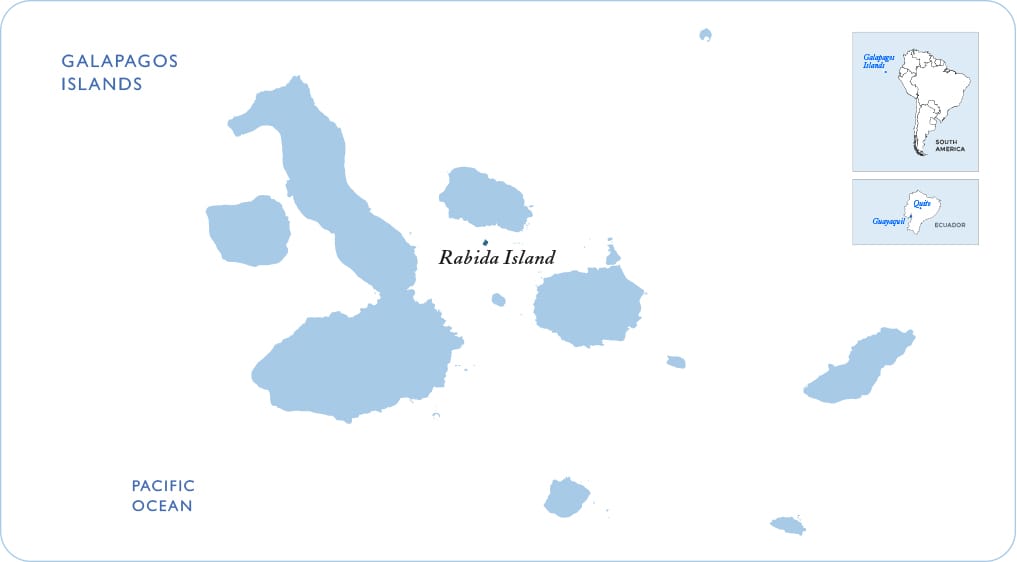- Home >
- Travel Guide >
- Galapagos Islands >
- About Galapagos >
- Rabida Island>
About Rabida Island in the Galapagos
Official Name: Rabida Island
English Name: Jervis Island
Visitor Sites: Beach and lagoon on northwest coast
Area: 1.9 sq. miles (4.9 sq km)
Max altitude: 1204 feet (367 meters)
Approximate Age: 2.5 million years old
Animals Regularly Seen: Flamingoes, White-cheeked Pintail Ducks, California Sea Lions.
Vegetation: Typical of arid zone, principally Opuntia Cacti, Bursera and thorny plants.
Geology: Consists of several separate eroded hills and blocky lavas that erupted in viscous state.
At the geologic center of the archipelago, Jervis Island presents a different “look” from the other islands, with its reddish beach and cliffs, and steep, sloping volcanic cinder-cones. A noisy colony of sea lions lives on the beach, and a short trail inland is a good place to observe land birds, including finches, doves, yellow warblers and mockingbirds. Along the beach side of Jervis Island it's possible to find a small colony of brown pelicans nesting atop a salt bush forest during certain times of the year. Hidden behind this little forest lies a rather small hyper-saline lagoon where flamingoes used to nest until some natural forces changed its condition in 1995. Snorkeling along the rocks at the east end of the beach reveals many reef fish common to these waters around Jervis Island in the Galapagos.

